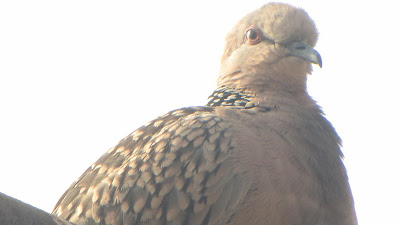I often come across spiders of all sizes amid my plants But some time ago as I was about to pluck some basil leaves, this small black and white spider jumped on a leaf giving me a few seconds to take this shot. This image has been cropped because the creature was so tiny. I was startled to see this shiny black spider...I'm more used to seeing the grey ones. It's a good feeling to see or notice anything new in one's surroundings. A garden, no matter how small, brings so much joy in these little discoveries.
Check out other Nature Notes posts at Michelle's Rambling Woods.

















